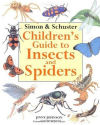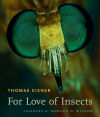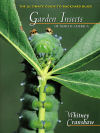


Official State Insects (insects, butterflies, bugs)
This page offers an all inclusive list of insect symbols regardless of the specific designation of each state. You'll see that some of the insects on the list were not designated as state insects but as state butterflies and even state bugs.
The Insect categories option below offers lists by specific official designation. The Insects specifically list shows only those insects that were officially designated as official insects. The butterflies specifically list shows only those that were designated as official butterflies. The Bugs specifically list shows only those that were designated as official bugs.
| Official insects, butterflies, and bugs listed by state. (List by state or year) | |||
State |
Name | Designated as | Year |
|---|---|---|---|
| Alabama | Eastern Tiger swallowtail | Official mascot and butterfly | 1989 |
| Alabama | Monarch butterfly | Official insect | 1989 |
| Alabama | Queen honey bee | Official agricultural insect | 2015 |
| Alaska | Four spot skimmer dragonfly | Official State insect | 1995 |
| Arizona | Two-tailed swallowtail | Official State butterfly | 2001 |
| Arkansas | Honeybee | Official State insect | 1973 |
| Arkansas | Diana fritillary butterfly | Official butterfly | 2007 |
| California | California dogface butterfly | Official State insect | 1972 |
| Colorado | Colorado Hhirstreak butterfly | State insect | 1996 |
| Connecticut | European or "praying" mantis | State insect | 1997 |
| Delaware | Tiger swallowtail | Official butterfly | 1974 |
| Delaware | Ladybug | Official State bug | 1974 |
| Florida | Zebra longwing | Official State butterfly | 1996 |
| Georgia | Honeybee | State of Georgia's official insect | 1975 |
| Georgia | Tiger swallowtail | Official Georgia State butterfly | 1988 |
| Hawaii | Pulelehua (Kamehameha butterfly) | Official insect | 2009 |
| Idaho | Monarch butterfly | State insect | 1992 |
| Illinois | Monarch butterfly | Official State insect | 1975 |
| Indiana | [ None ] | ||
| Iowa | [ None ] | ||
| Kansas | Honeybee | Official insect | 1976 |
| Kentucky | Viceroy butterfly | State butterfly | 1990 |
| Kentucky | Honeybee | State agricultural insect | 2010 |
| Louisiana | Honeybee | Official State insect | 1977 |
| Maine | Honeybee | Official insect | 1975 |
| Maryland | Baltimore checkerspot butterfly | State insect | 1973 |
| Massachusetts | Ladybug | Insect or insect emblem | 1990 |
| Michigan | [ None ] | ||
| Minnesota | Monarch butterfly | Official butterfly | 2000 |
| Mississippi | Honeybee | State insect | 1980 |
| Mississippi | Spicebush swallowtail | State butterfly | 1991 |
| Missouri | Honey bee | Official insect | 1985 |
| Montana | Mourning cloak | Official Montana State butterfly | 2001 |
| Nebraska | Honeybee | Official State insect | 1975 |
| Nevada | Vivid dancer damselfly | Official state insect | 2009 |
| New Hampshire | Ladybug | Official State insect | 1977 |
| New Hampshire | Karner blue butterfly | Official State butterfly | 1992 |
| New Jersey | Honey bee | New Jersey State bug | 1974 |
| New Jersey | Black swallowtail butterfly (Papilio polyxenes) | State butterfly | 2016 |
| New Mexico | Tarantula hawk wasp | Official insect | 1989 |
| New Mexico | Sandia hairstreak | Official butterfly | 2003 |
| New York | Lady bug | Official insect | 1989 |
| North Carolina | Honeybee | Official State insect | 1973 |
| North Carolina | Eastern tiger swallowtail | Official State butterfly | 2012 |
| North Dakota | Convergent lady beetle (ladybug) Hippodamia convergens | Official insect | 2011 |
| Ohio | Ladybug | State insect | 1975 |
| Oklahoma | Honeybee | Official insect | 1992 |
| Oklahoma | Black swallowtail | State butterfly | 1996 |
| Oregon | Oregon swallowtail butterfly | Official insect | 1979 |
| Pennsylvania | Firefly | Official insect | 1974 |
| Rhode Island | American burying beetle | Official state insect | 2015 |
| South Carolina | Carolina mantid | Official insect | 1988 |
| South Carolina | Tiger swallowtail | Official butterfly | 1994 |
| South Dakota | Honeybee | Official insect | 1978 |
| Tennessee | Firefly | Official insect | 1975 |
| Tennessee | Ladybug | Official insect | 1975 |
| Tennessee | Honeybee | Official agricultural insect | 1990 |
| Tennessee | Zebra swallowtail | Official State butterfly | 1994 |
| Texas | Monarch butterfly | Official State insect | 1995 |
| Texas | Western honey bee | Official state pollinator of Texas | 2015 |
| Utah | Honeybee | State insect | 1983 |
| Vermont | Honeybee | State insect | 1977 |
| Vermont | Monarch butterfly | State butterfly | 1987 |
| Virginia | Tiger swallowtail butterfly | Official insect | 1991 |
| Washington | Green darner dragonfly | Official insect | 1997 |
| West Virginia | Monarch butterfly | Official State butterfly | 1995 |
| West Virginia | Honey bee | Official state insect | 2002 |
| Wisconsin | Honeybee | State insect | 1977 |
| Wyoming | Sheridan's green hairstreak | Official State butterfly | 2009 |
|
|
|||
|
|
|||
|
|
|||
 Children's Guide to Insects and Spiders Jinny Johnson Simon & Schuster Children's Guide to Insects and Spiders , by Jinny Johnson. 64 pages. Simon & Schuster Children's Publishing (May 1, 1997) Reading level: Ages 4-8. A detailed introduction to spiders and insects contains information about every major group of arachnids and insects, hundreds of thought-provoking facts, and full-color pictures and photographs." |
|||
 Insect Laurence Mound Insect, by Laurence Mound. 72 pages. Publisher: DK Publishing, Inc. (June 25, 2007) Reading level: Ages 8+. Full-color photos. "Sure to attract browsers and students researching assignments, Insect explores the anatomy, behavior, and ecology of those creatures, with a heavy emphasis on popular species. Each double-page spread consists of concise, yet lively and readable text and numerous excellent-quality captioned photos, drawings, and diagrams." --School Library Journal |
|||
 For love of Insects Thomas Eisner For Love of Insects, by Thomas Eisner. 464 pages. Publisher: Belknap Press of Harvard University Press (October 31, 2005) Imagine beetles ejecting defensive sprays as hot as boiling water; female moths holding their mates for ransom; caterpillars disguising themselves as flowers by fastening petals to their bodies; termites emitting a viscous glue to rally fellow soldiers--and you will have entered an insect world once beyond imagining, a world observed and described down to its tiniest astonishing detail by Thomas Eisner. The story of a lifetime of such minute explorations, For Love of Insects celebrates the small creatures that have emerged triumphant on the planet, the beneficiaries of extraordinary evolutionary inventiveness and unparalleled reproductive capacity. |
|||
 Insects Stephen A. Marshall Insects: Their Natural History and Diversity, by Stephen A. Marshall. 736 pages. Publisher: Firefly Books; Updated edition (June 2006) With a Photographic Guide to Insects of Eastern North America Meticulously researched and illustrated with color photographs, Insects is a landmark reference book that is ideal for any naturalist or entomologist. To enhance exact identification of insects, the photographs in this encyclopedic reference were taken in the field -- and are not pinned specimens. Insects enables readers to identify most insects quickly and accurately. The more than 50 pages of picture keys lead to the appropriate chapter and specific photos to confirm identification. The keys are surprisingly comprehensive and easy for non-specialists to use. |
|||
 Garden Insects of North America by Whitney Cranshaw Garden Insects of North America: The Ultimate Guide to Backyard Bugs, by Whitney Cranshaw. 672 pages. Princeton University Press (March 8, 2004) Garden Insects of North America is the most comprehensive and user-friendly guide to the common insects and mites affecting yard and garden plants in North America. In a manner no previous book has come close to achieving, through full-color photos and concise, clear, scientifically accurate text, it describes the vast majority of species associated with shade trees and shrubs, turfgrass, flowers and ornamental plants, vegetables, and fruits--1,420 of them, including crickets, katydids, fruit flies, mealybugs, moths, maggots, borers, aphids, ants, bees, and many, many more. |
|||
[ HOME
| LINK TO NETSTATE
| GUESTBOOK
]
[ SPONSORSHIPS/ADVERTISING
| PRIVACY STATEMENT
| CONTACT US
]
Site designed exclusively for NETSTATE.COM by NSTATE, LLC

NETSTATE.COM is a Trademark of NSTATE, LLC.
Copyright © by NSTATE, LLC. All rights reserved.
No copyright is claimed on non-original or licensed material.
Support NETSTATE
